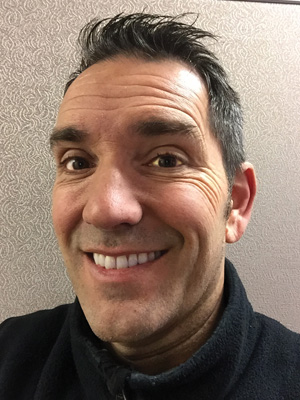Q: As an estimator, I often hear the phrase, ‘We don’t pay for that.’ This is not just about rates but mostly procedures, fasteners or sublet charges. What approach are other shops taking to get insurance companies to pay legitimate expenses?”

— Jim Rossman, lead estimator, Mason Auto Body, Mason, Mich.
A: You are not alone in your frustrations, as thousands of collision repairers across the country experience the same frustrations daily. The frequent statement, “We don’t pay for that,” is all-too-often preceded by, “You’re the only one who asks for that,” and followed by, “You’ll have to ask your customer to pay for that.”
The reason many insurance claims people use such phrases is simple: They work!
Insurers know the last thing most repairers want to do is involve the customer in a disagreement between them and the insurer. Most repairers will try to resolve the issues without the customer ever knowing. Unfortunately for many consumers, what I refer to as “The Gravity Theory” takes place. This is where the insurer shortchanges the repairer and the repairer then shortchanges the customer and, in the end, the customer may receive an inferior repair and take an economic loss at the time of sale/trade-in. All the while, the insurer enjoys all the rewards (savings) and the repairer and the consumer incur all the risks.
Saving Billions
Insurers save billions of dollars each year in their efforts to “mitigate claims costs,” which all-too-often is accomplished by avoiding full payment for legitimate processes and materials. Because they already have the funds in their company coffers, these savings equate to 100-percent net profit, which is a strong incentive and motivator for such behavior.
These are also billions of dollars repairers forfeit rather than involve, inform and educate their customer. Keep in mind that the monies forfeited by repairers aren’t theirs to give away; they’re the consumers’ claim proceeds intended to fully indemnify them for a proper repair. If a repairer is not being properly compensated for providing a needed process, are they providing it? And if so, are they doing it in a thorough and workmanlike manner?
Other Approaches
As for the “approach” and methods others employ to combat such conduct, I can only offer what Auto Damage Experts (ADE) coaching-consulting clients across the country are doing with consistent success. It’s a process that not only helps the customer receive a full and proper repair but one that has also been very effective at helping the repairer avoid unnecessary liabilities. These processes change insurer claim rep behavior and encourage them to consider all processes and materials needed for a proper, thorough and quality repair that the repairer can confidently stand behind. These collision repairers adhere to a simple philosophy summed up by what they say to a claims person who refuses to pay for proper and necessary procedures: “We’re not going to get upset if you don’t pay for that, just so long as our customer doesn’t get upset with us if we don’t provide it. But let’s first ask the customer for their thoughts.”
The Key
The key to this type of customer-based management process is that the repairer is no longer afraid to involve the customer. The customer can be an active part of the decision process and can therefore safeguard their family’s personal safety and economic well-being. Why shouldn’t they? It’s their vehicle, their claim, their safety and their economic well-being at stake!
The key is for repairers to properly undertake managing the customer’s expectations from the very first meeting and build upon it throughout the repair and beyond.
Earning Trust
As most shops know, earning your customers’ trust and confidence is huge, especially for independent repairers who do not rely on DRPs. It not only assures you that the customer will call upon you should the need ever arise, but will garner their lifelong personal referrals to others.
It’s been written that “No one can serve two masters. Either you will hate the one and love the other, or you will be devoted to the one and despise the other.” Repairers need to determine who they will work for.
For one to change “business as usual,” one will need to change the way they do business. They’ll need to determine who they will work for and what liabilities they’re willing to accept and which ones they won’t.
The only way for repairers to change insurer behaviors is to first change their own. If a repairer makes the vehicle owner their main priority, everything else will fall into its proper place … including your company’s profits.














